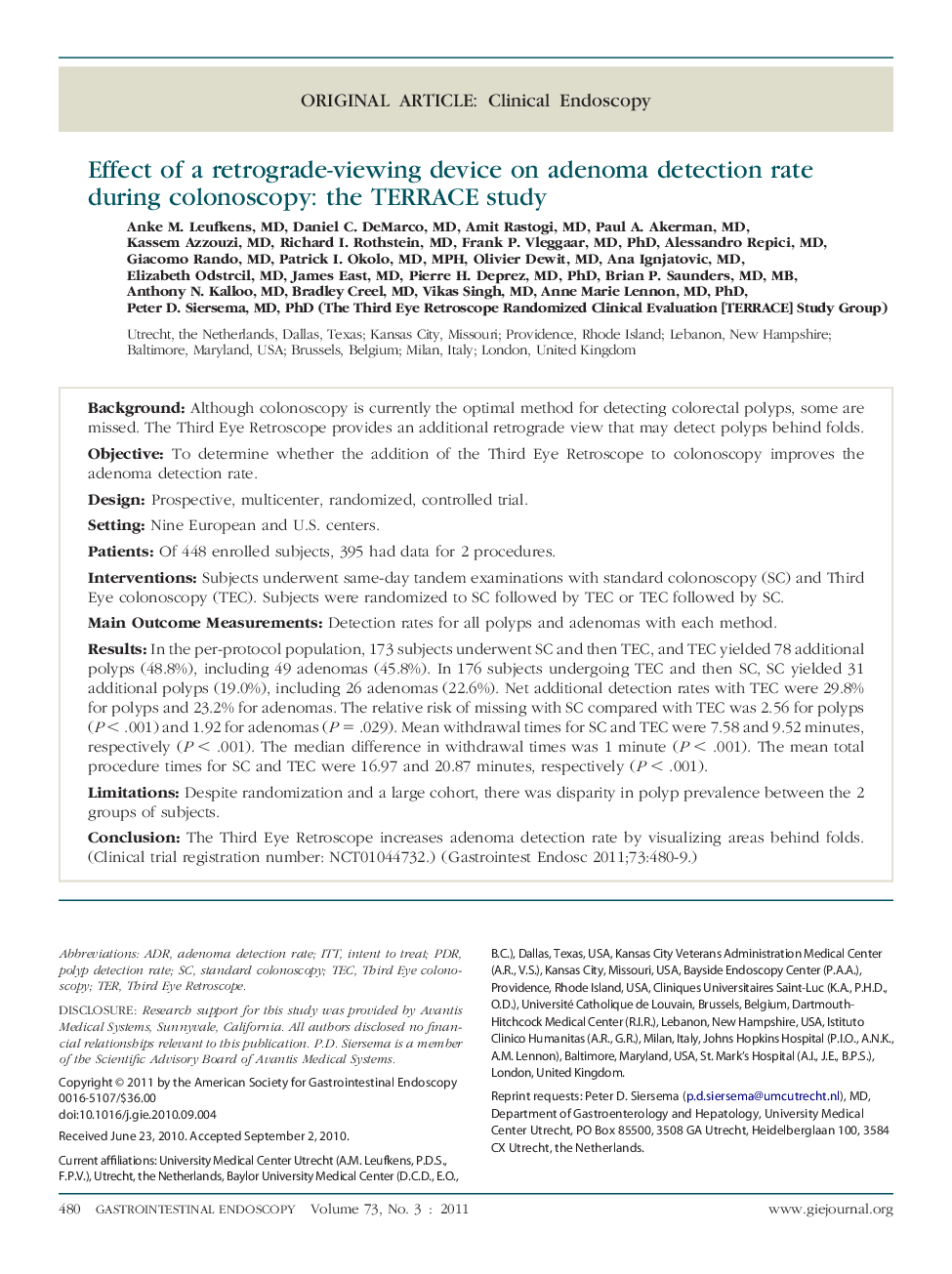| Article ID | Journal | Published Year | Pages | File Type |
|---|---|---|---|---|
| 3306319 | Gastrointestinal Endoscopy | 2011 | 10 Pages |
BackgroundAlthough colonoscopy is currently the optimal method for detecting colorectal polyps, some are missed. The Third Eye Retroscope provides an additional retrograde view that may detect polyps behind folds.ObjectiveTo determine whether the addition of the Third Eye Retroscope to colonoscopy improves the adenoma detection rate.DesignProspective, multicenter, randomized, controlled trial.SettingNine European and U.S. centers.PatientsOf 448 enrolled subjects, 395 had data for 2 procedures.InterventionsSubjects underwent same-day tandem examinations with standard colonoscopy (SC) and Third Eye colonoscopy (TEC). Subjects were randomized to SC followed by TEC or TEC followed by SC.Main Outcome MeasurementsDetection rates for all polyps and adenomas with each method.ResultsIn the per-protocol population, 173 subjects underwent SC and then TEC, and TEC yielded 78 additional polyps (48.8%), including 49 adenomas (45.8%). In 176 subjects undergoing TEC and then SC, SC yielded 31 additional polyps (19.0%), including 26 adenomas (22.6%). Net additional detection rates with TEC were 29.8% for polyps and 23.2% for adenomas. The relative risk of missing with SC compared with TEC was 2.56 for polyps (P < .001) and 1.92 for adenomas (P = .029). Mean withdrawal times for SC and TEC were 7.58 and 9.52 minutes, respectively (P < .001). The median difference in withdrawal times was 1 minute (P < .001). The mean total procedure times for SC and TEC were 16.97 and 20.87 minutes, respectively (P < .001).LimitationsDespite randomization and a large cohort, there was disparity in polyp prevalence between the 2 groups of subjects.ConclusionThe Third Eye Retroscope increases adenoma detection rate by visualizing areas behind folds. (Clinical trial registration number: NCT01044732.)
